Step by step creation of a cartoon. How cartoons are made
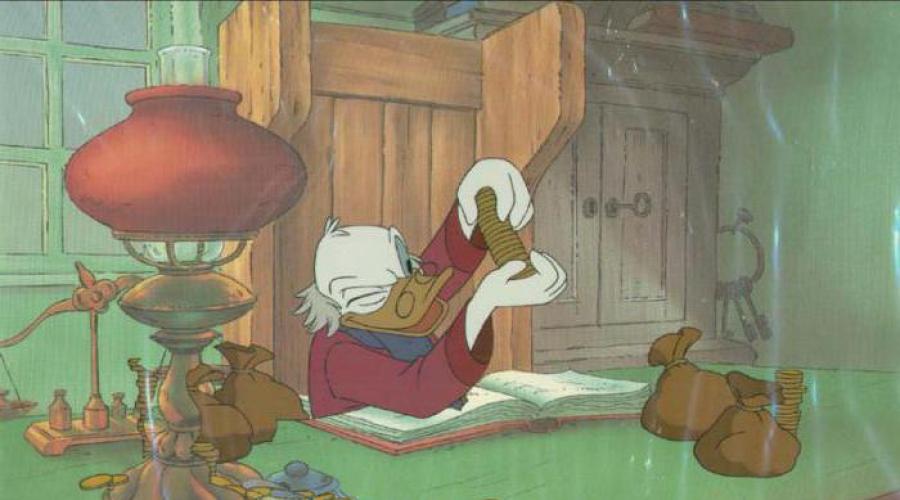
We all grew up on good old Soviet cartoons. But, seeing Dunno, Funtik or other favorite characters on the screen, no one thought about how much effort was put into creating one minute of the cartoon. What is animation? Where did her story begin? Puppet and hand-drawn animation - which one is older? You will find answers to these questions in this article.
What is animation?
Animation is a set of techniques based on the creation of moving images, or rather illusions of their movement, since many still pictures and scenes are used for this. That is, in fact, this is shooting pictures or dolls depicting individual moments of movement. Animation appeared much earlier than the Lumiere brothers invented cinema. Modern animation is increasingly called the term "animation", from the English "animation". Animation, animation - these are similar concepts, but not identical. Their relationship can be characterized as follows. Animation is the creation of animation where you take time-lapse pictures of drawings, scenes, paper constructions, etc.
The invention of animation
What is animation? Part of the childhood of a lot of kids. But where did it start?
In 1877, a self-taught engineer Emile Reynaud constructed a praxinoscope, a mechanical toy with a mirrored rotating drum and ribbon on which pictures were applied. Hand-drawn animation originated from this very invention. Later, Reino improved his unit: now hand-painted pantomimes lasted from 7 to 15 minutes, although it must be admitted that this device for synchronizing image and sound was primitive, but not for those times
Moving pictures
The animation technology looks like this: on each next frame, the hero figure is presented in a slightly different phase of movement. Separately taken pictures are photographed one by one and projected on the screen. Broadcast speed - 24 frames per second.
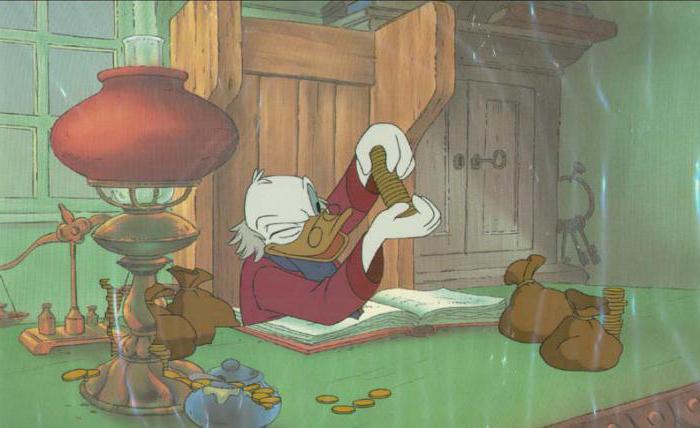
What is animation? This is a creative work, the creation of which takes a lot of time and work of hundreds of people. Producers define general design tapes, screenwriters work on the plot and write the script, which is then broken down into scenes and episodes, illustrated by a series of sketches. After that, all this ends up on the table of the director-animator, who distributes the scenes between the animators: each of them draws a certain position of the characters in the episode. Intermediate scenes will be drawn with minor multipliers. The rest of the artists are busy creating the background against which the action unfolds.
Then outline drawings need to be painted. They are transferred to transparent plastic, inked and painted. After that, the operator takes pictures of the drawings using a special camera. Final stage- synchronization of image and sound.
There is also another technique for creating a cartoon.
Puppet animation
Russia is the birthplace of puppet, or volumetric, animation. With the development of this type of cartoons, new technique making films. But nevertheless, the process of creating the tape remained no less laborious.
The first stage of creating a cartoon is writing a script and thinking through the images of the characters. According to the sketches of the characters, dolls, their costumes and shoes are sewn, which will correspond to the image of each of the heroes. This is the most time consuming stage of the work, since each doll must be mobile.
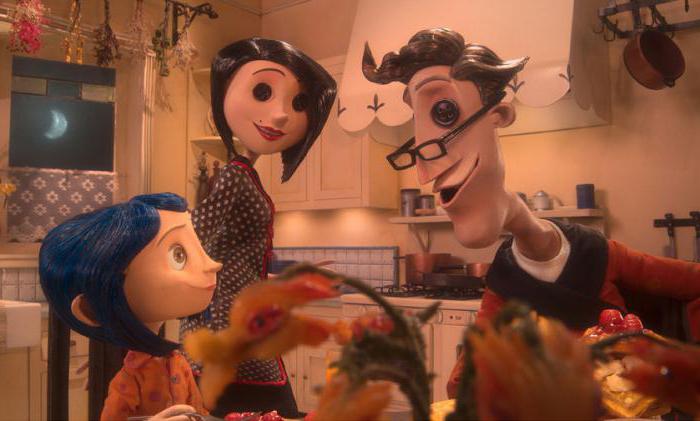
The second stage is shooting the phases of the movement of the dolls corresponding to the scenario. One episode can be filmed for several days, or maybe several months. A full-length puppet cartoon can be filmed for 3 years or even longer. But basically the volumetric animation has a duration of 5-15 minutes, but even this takes several months.
Why is this happening? For example, according to the script of the cartoon, the hero runs along a forest path. To shoot this scene, the character doll is placed against the background of a moving scenery, which depicts trees, sun, clouds, sky, birds. Creating the effect of a running character, the animator manually moves the hero's legs and arms, turns his head. In this way, each phase of the character's run is gradually filmed. Together with the body, the phases of movement of clothing and hair are also removed. So, during one day of shooting a cartoon, when all the photos are combined into one video sequence, the creators of the tape shoot only a couple of seconds of screen time.
When computer technology came to animation, puppet cartoons began to be filmed much faster.

Electronic animation - animation
Electronic animation, or animation, is created with the help of a computer: pre-prepared graphic files are sequentially lined up in the form of a slide show. Flash animation is no less popular, when a cartoon is created using a special program Macromedia Flash. It is easy to use and customize, which explains its popularity.
How are cartoons made?
It is generally accepted that cartoon is entertainment for children. However, beautiful cartoon stories are loved not only by kids, but also by adults. Today animation is no longer just fun. It is real art and challenging technical process... Want to learn how cartoons are made? Let's look where inanimate pictures come to life and plasticine characters learn to speak - in the studio of an animator.
How it all began
Few people know that animation appeared even before cinematography. Emile Reino is considered to be the founding father of cartoons. In 1877, he presented to the public the first moving tape, on which drawn pictures successively replaced each other. However, before him there were attempts to revive the pictures. Back in the 15th century, books were circulated in Europe, which, when flipped quickly, created the illusion of characters' movements. Actually, it is on this that the very principle of animation is built.
Any of us can create the simplest cartoon. We take a notebook, draw on each of its pages the same character in different poses, imitating a sequence of movements, then quickly turn over the pages. Our eye perceives this as a single video sequence.
By the way, animation was originally an adult entertainment. Children began to make cartoons only in the 20th century.
What are cartoons
Drawn
The most popular type of animation to this day is hand-drawn. Only technical devices change. If earlier cartoons were drawn by hand, now it is done on a computer. The principle of how drawn cartoons are made has remained unchanged.
First, a detailed script is written. Then all the characters are drawn. Each drawing represents an element of the character's movement, his individual pose. There may be thousands of such drawings. After the drawings are either photographed one at a time and combined into a single video sequence with 24 frames per second, or using special programs the same is done on a computer.
3D cartoons
Computer animation is the most promising direction today. In it, 3D cartoons stand out. They allow you to make the image three-dimensional. This is a very expensive technology, but it is 3D cartoons that are gathering full houses in cinemas today.
How are 3D cartoons made? Of course, here people come to the rescue modern technologies... The picture is created using special computer programs like Maya or Z-Brush. First, the "skeleton" of the character is drawn with all the muscles and tendons. Each of them, as in a real human body, is responsible for a particular action. That is, when turning the head, we will see the movement of the cervical muscles, and when the arm is bent, the biceps will strain. Particular attention is paid to the face, the muscles responsible for facial expressions.
Then the texture is pulled over the skeleton. And this is not only the color of skin and clothing. It is important to work out every wrinkle and fold, all chiaroscuro and so on, so that the character looks alive. The background is also being worked out in detail. Everything should be as believable and realistic as possible. In order not to draw every blade of grass, animators have special modules that "plant" vegetation in the frame as it grows in reality.
Then the editing begins. Usually, an animator creates 4 seconds of a cartoon a week - this is such a painstaking process! To be on time, dozens of animators usually work on a cartoon.
Now, when you watch the next "Shrek" in 3D, remember how cartoons are made. The video is 90 minutes long - the work of hundreds of people and the fruit of many months of hard work.
Plasticine cartoons
Plasticine cartoons loved from childhood are made a little easier. But here you cannot call on the computer for help, except at the stage of editing. All figures in all their actions are sculpted by hand.
In professional studios, figures are made from a special plasticine that does not melt under lamps. Then they are laid on a special surface of pure color (blue, green) - chromokey. Figures are removed on digital camera... Then the background is also removed. And already on the computer, the background and the figures are connected. This is called the transfer method. It is now the most common.
You can create your own plasticine cartoon at home using a camera. Now on the Internet there are many master classes on how to make plasticine cartoons. And for this you don't need to have a professional set of tools. Enough digital "soap dish", plasticine, talented hands and a simple program for video processing.
On June 10, 1936, the largest studio in the USSR was created cartoons Soyuzmultfilm. Then it was called "Soyuzdetmultfilm", and in "Soyuzmultfilm" it was renamed in August 1937.
Whatever one may say, but the best cartoons of Soviet childhood can be safely called the work of the studio "Soyuzmultfilm". Over the years of its existence, it has released great amount cartoons for every taste, which we show to our children and do not get tired of watching ourselves. In addition, most cartoons contain many secrets and details that only the most attentive can see. Let's get to know them.
(23 photos total)
Winnie the Pooh
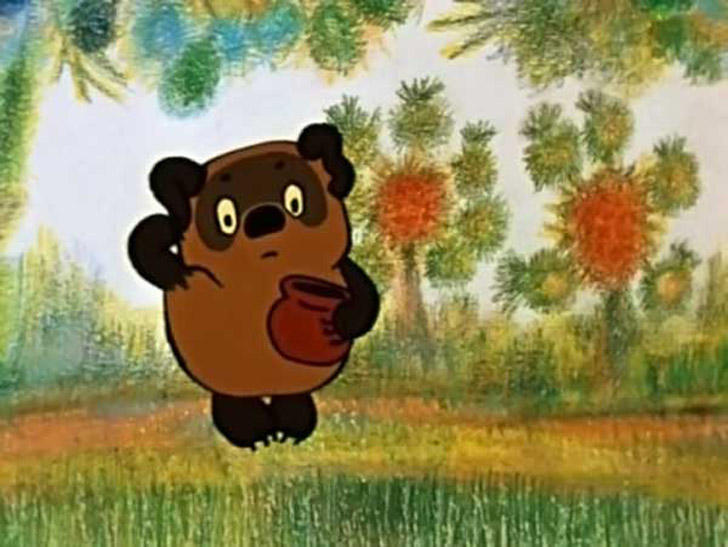
The first film adaptation of the book about Winnie the Pooh belongs to the Walt Disney studio: in the early 60s, several episodes about a funny bear and his friends were released. Before starting work on the domestic "Winnie the Pooh" Fyodor Khitruk had not seen the Disney version.
However, he wanted to move away from the images that were depicted in the book, to create his own, new and original characters. Of course, he succeeded. Everyone who has seen both Disney's and our versions, unequivocally speaks in favor of the latter.
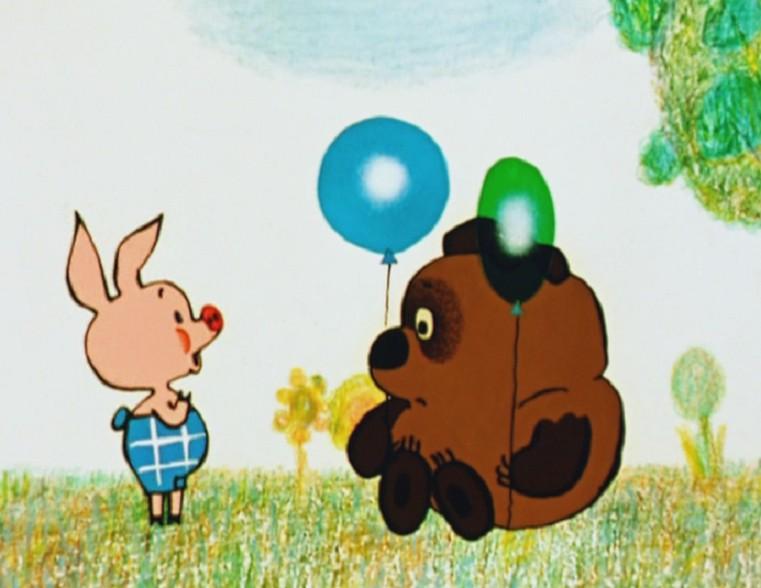
It is curious that initially Winnie the Pooh was very hairy, his ears looked a little "chewed", and his eyes were different sizes... At first, the artists made the piglet look like a thick, appetizing sausage. Many have been drawn by the most different cubs and piglets before the characters took on the look we were used to.

By the way, in the second and third series, the characters' drawings were simplified: black "glasses" on the face of Winnie the Pooh acquired clear outlines, and Piglet's ruddy cheeks were indicated by a single red line. While working on the cartoon about Winnie the Pooh, Fyodor Khitruk did not know about the existence of animated films about a funny bear from the Disney studio. Later, according to Khitruk, Disney director Wolfgang Reiterman liked his version. At the same time, since Soviet cartoons were created without taking into account the exclusive rights to the film adaptation belonging to the Disney studio, their showing abroad was impossible.
Kid and Carlson
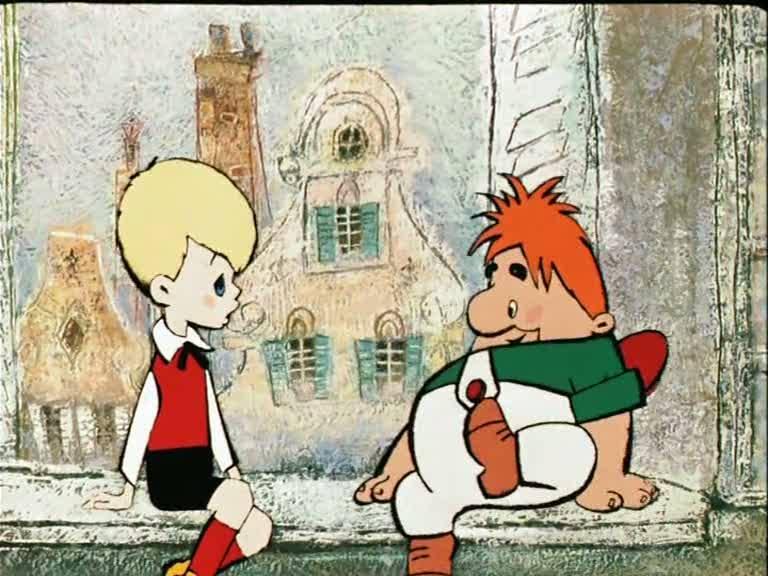
The Soviet cartoon "Kid and Carlson" directed by Boris Stepantsev, based on the story of the Swedish writer Astrid Lindgren and released on television in 1968, was enthusiastically received by both young and adult viewers.
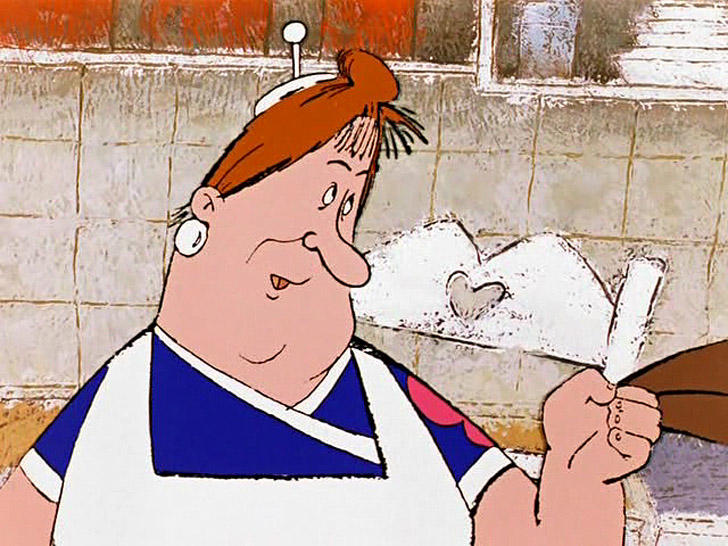
In total, there were two episodes about Carlson: "The Kid and Carlson" (1968) and "Carlson is Back" (1970). "Soyuzmultfilm" was going to do the third, but this idea was never realized. The archives of the studio still store a film that was planned to be used for filming the cartoon based on the third part of the trilogy about Malysh and Carlson - "Carlson is playing pranks again."
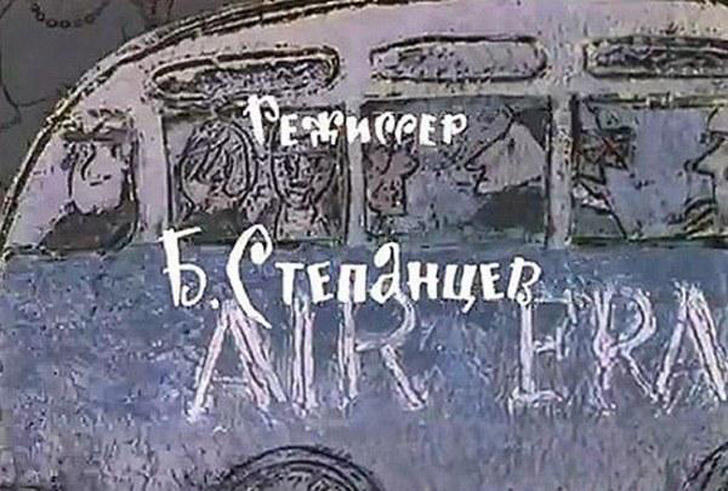
If you look very closely at the cartoon about Carlson, you will notice the following detail: at the beginning of the cartoon, when the Kid crosses the road, an advertisement for Air France is visible on a passing bus.
The detectives from the cartoon about the adventures of Funtik the pig are very similar to the lingerie thieves from the cartoon about Carlson. In addition, the Soviet parents of Uncle Fyodor from Prostokvashino are very similar to the Swedish parents of the Kid.
Leopold the Cat
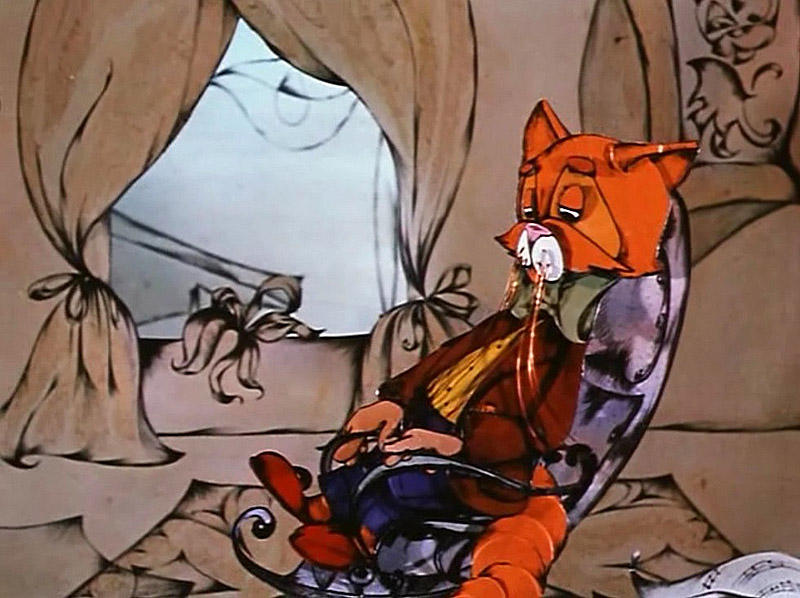
The Soviet animated series about Leopold the cat and hooligan mice pestering him was filmed on Creative association"Screen" from 1975 to 1993. At the time of the creation of the animated series, there was still no art workshop. Therefore, the first two episodes ("Revenge of Leopold the Cat" and "Leopold and gold fish”) Were not drawn, but were made using the transfer technique.
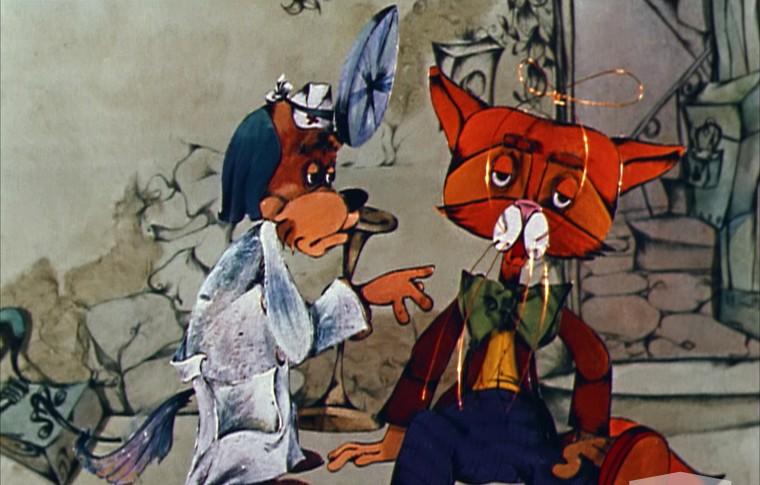
Small details of the characters and decorations were cut out of paper and transferred under glass. After each frame, the details moved a tiny distance, which created the illusion of movement. Further series of the cartoon were realized using hand-drawn animation.
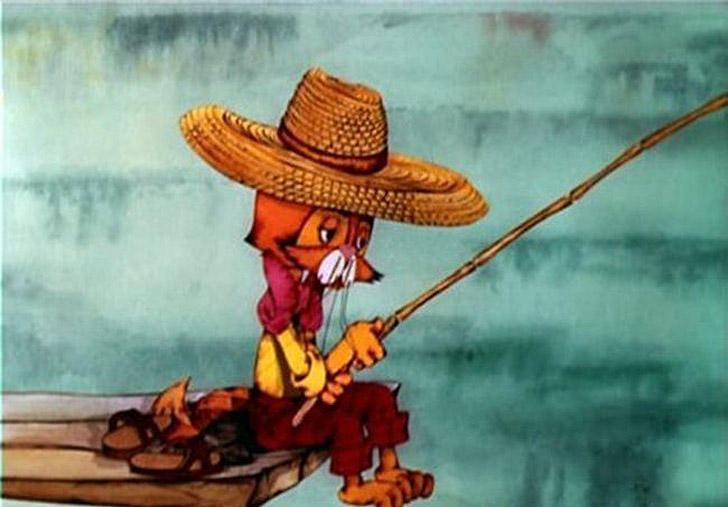
The creators of the cartoon have long puzzled over the name of the main character. The authors really did not want to call him too simply - "ordinary" Barsik or Murzik. According to their plans, the name had to sound beautiful and at the same time be easy to pronounce.
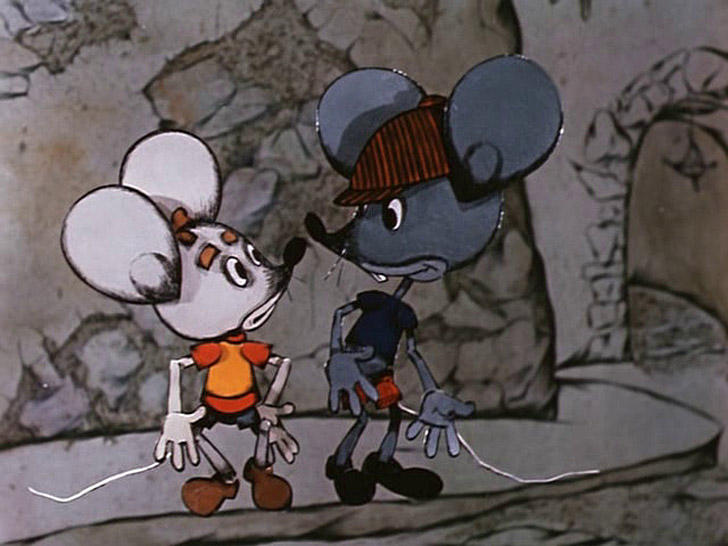
There is a version according to which the good-natured and charming cat was named by the son of the scriptwriter Arkady Hayt. While working on the plot of the cartoon, the boy tried to do two things at once: to follow the adults and watch "The Elusive Avengers" on TV. The name of the White Guard Colonel Leopold Kudasov, one of the heroes of "The Elusive", prompted the idea to name the cat in the same way. Hooligan mice are also not unnamed, as many people think. The fat gray rodent is called Motey, and the thin white animal is called Mitya. However, in the cartoon, mice are never named by name.
Cheburashka
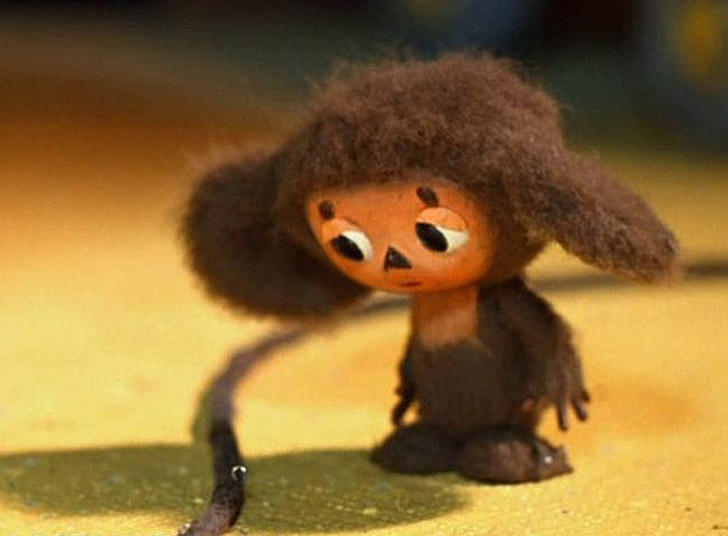
The Soviet cartoon about Cheburashka was filmed by director Roman Kachanov based on the book by Eduard Uspensky, more precisely, according to their joint scenario... And although Ouspensky wrote 8 stories about Crocodile Gena, Cheburashka and their friends, 4 episodes were made in total.
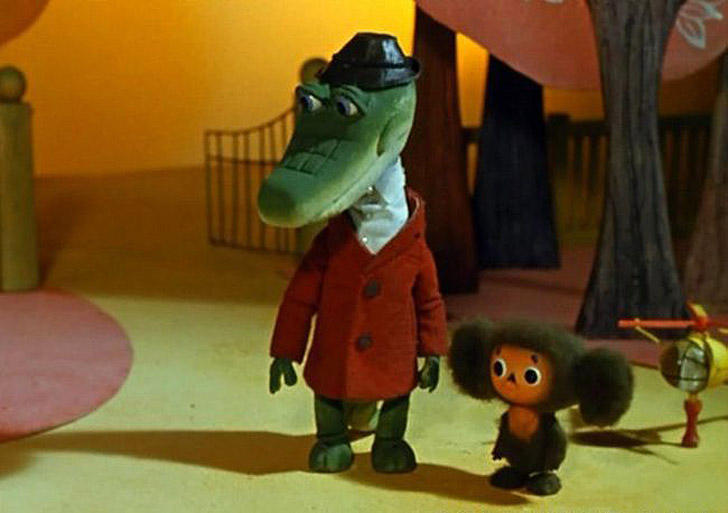
The cartoon image of Cheburashka known today is a cute creature with huge ears, big trusting eyes and soft brown hair - was invented by the animator Leonid Shvartsman. This is how he first appeared in Roman Kachanov's cartoon "Crocodile Gena" (1969) and won the hearts of children and adults.
According to the preface to the book by Eduard Uspensky "Gena the Crocodile and His Friends", Cheburashka was the name of a defective toy that was a child of the author of the book, depicting an unprecedented animal: either a bear cub, or a hare with big ears.
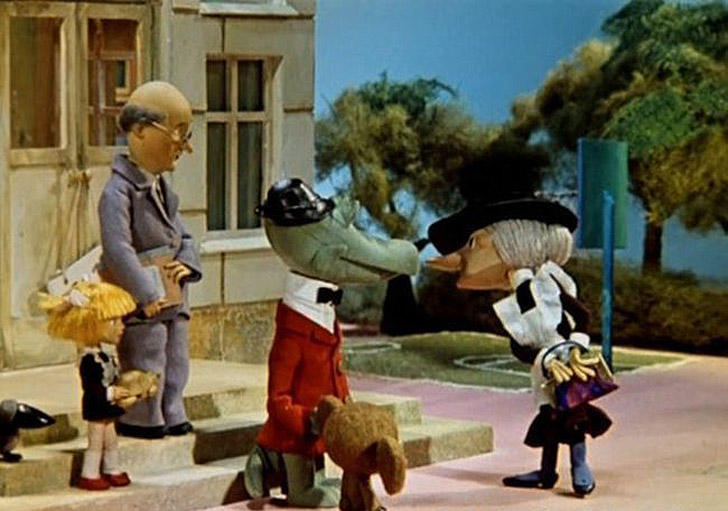
According to the book, the author's parents argued that Cheburashka is unknown to science a beast that lives in the hot tropical jungle. Therefore, in the text of the book, the heroes of which, according to the writer, are the children's toys of Ouspensky himself, Cheburashka really appears before the readers as an unknown tropical animal.
In an interview, Eduard Uspensky said that he once came to visit a friend who had a little daughter. At the time of the writer's visit, the girl was trying on a fur coat that dragged along the floor. “The girl was constantly falling, stumbling over her fur coat. And her father, after another fall, exclaimed: "Oh, cheburahnula again!" This word stuck in my memory, I asked its meaning. It turned out that "cheburakhnutsya" means "to fall." This is how the name of my hero appeared, ”the author admitted.
Three from Prostokvashino
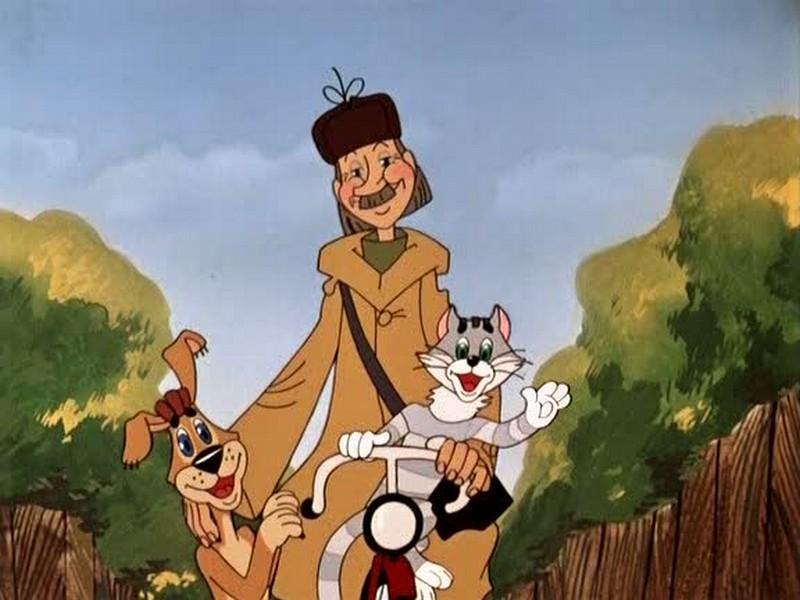
The animated series "Three from Prostokvashino" based on the story of Eduard Uspensky "Uncle Fyodor, the Dog and the Cat" was directed by Vladimir Popov. A total of three episodes were released. Much of what is in literary source, was not included in the cartoon, but the popularity of the film adaptation several times exceeded the popularity of Ouspensky's story.
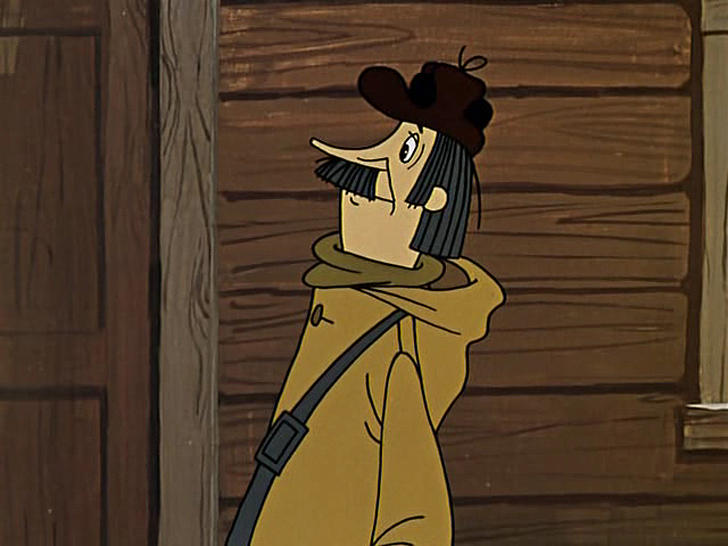
Work on the creation of screen images of the cartoon "Three from Prostokvashino" was divided between the production designers at the request of the director Vladimir Popov. The image of Galchonok did not work for a very long time. Therefore, everyone who entered the artists' premises at Soyuzmultfilm was asked to draw this character. The artist Leonid Shvartsman, who invented the cartoon Cheburashka, even had a hand in its creation.
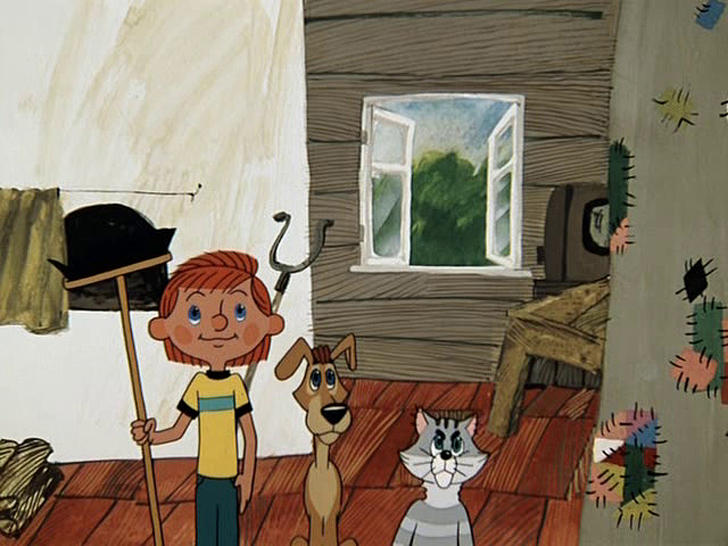
Uncle Fyodor is the only type according to which the team that worked on the creation of the cartoon "Three from Prostokvashino" never came to a common decision. Therefore, his on-screen image varies greatly from series to series. Such a move, inadmissible from the point of view of Western animation, was perceived in our country quite calmly.
By the way, the cat Matroskin could also be called Taraskin. The fact is that when Eduard Uspensky was writing his story, he wanted to name this character by the name of Anatoly Taraskin, an employee of the Wick magazine, but he did not allow his name to be used. True, he later regretted it and confessed to the writer: “What a fool I was! I regretted giving my surname! "
Wait for it!
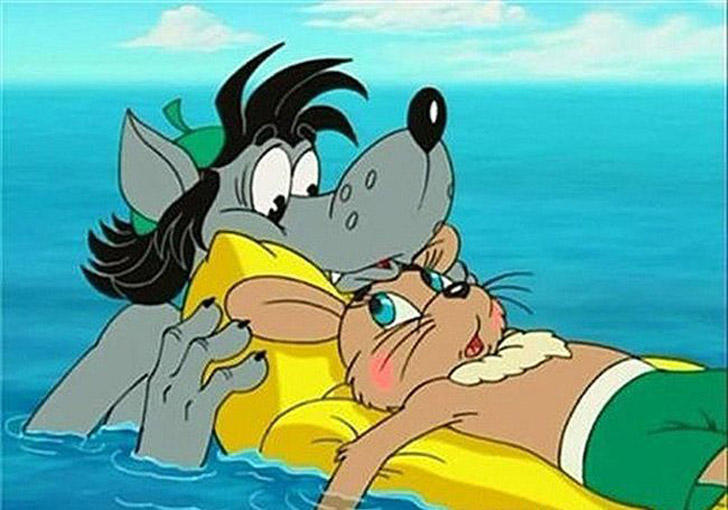
"Wait for it!" - this is not just an animated series, this is a real legend, on which more than one generation has grown up. In 1969, "Well, wait a minute!" was a government order. The officials decided to give our answer to Disney cartoons and allocated a pretty serious budget. Customers' demands were limited to a request to do something funny.
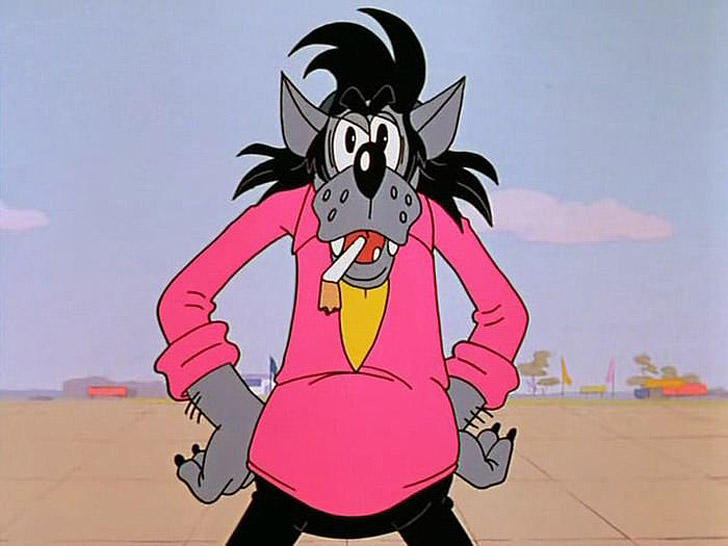
With this request, the management of Soyuzmultfilm turned to the famous comedians Alexander Kurlyandsky, Arkady Hayt, Felix Kamov and Eduard Uspensky.
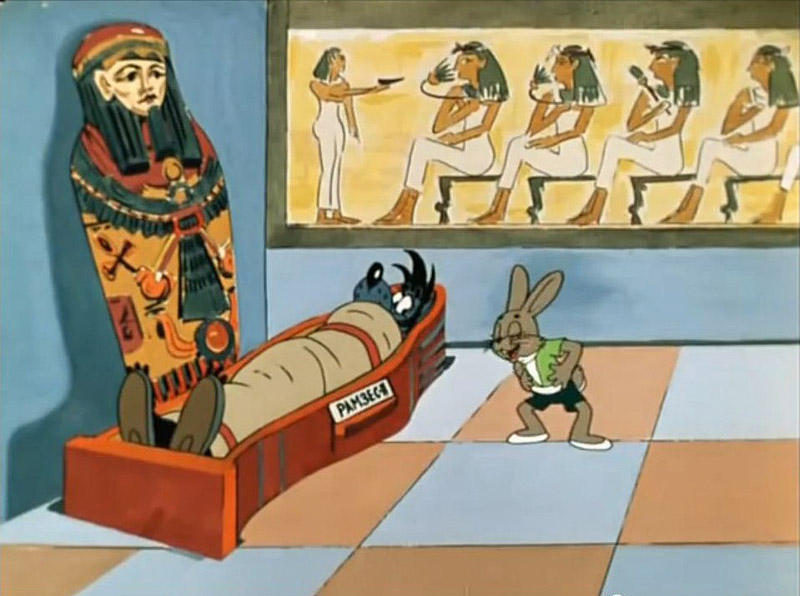
A lot of controversy among the creators of the cartoon arose about the 12th episode of the famous cartoon, when the Wolf finds himself in the sarcophagus of Pharaoh Ramses. It was even assumed that in this connection the Egyptian government could protest. But nothing happened.

In the animated series "Well, wait a minute!" awesome musical selection, which uses popular recordings of Western and Soviet stage... But they never appeared in the cartoon's output. It was not accepted then.
The music played during the credits is the "Well, wait a minute!" - called Vizisi ("Water skiing") and was published in a collection of Hungarian pop music by the Melodiya firm in 1967. Its author is a Hungarian composer named Tamás Deák.
Last year's snow fell
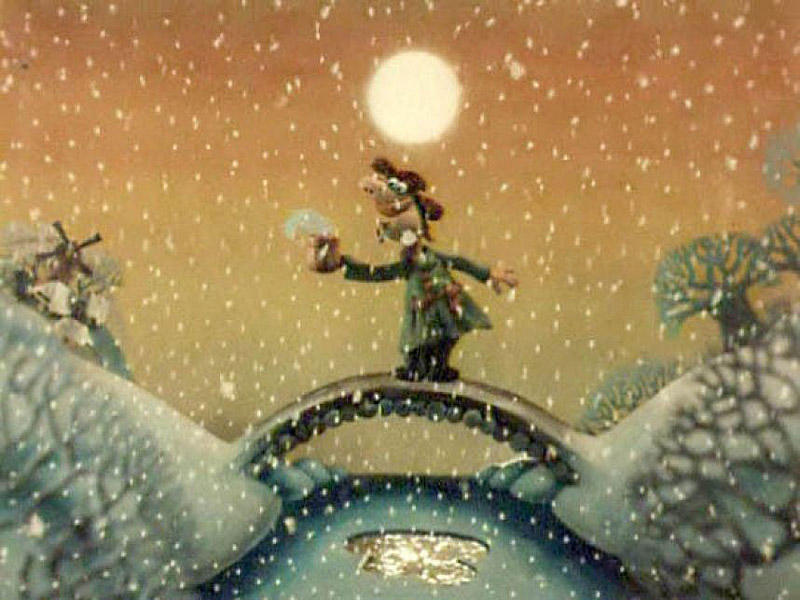
As the composer Grigory Gladkov mentioned during his speech in the humorous program "Around Laughter", the cartoon "Last year's snow was falling" had its original working title "Fir-trees, thick forest", and the main character in it was a janitor from "Plasticine Crow". Then the visual concept of the main character was finalized, however, like the name of the picture.
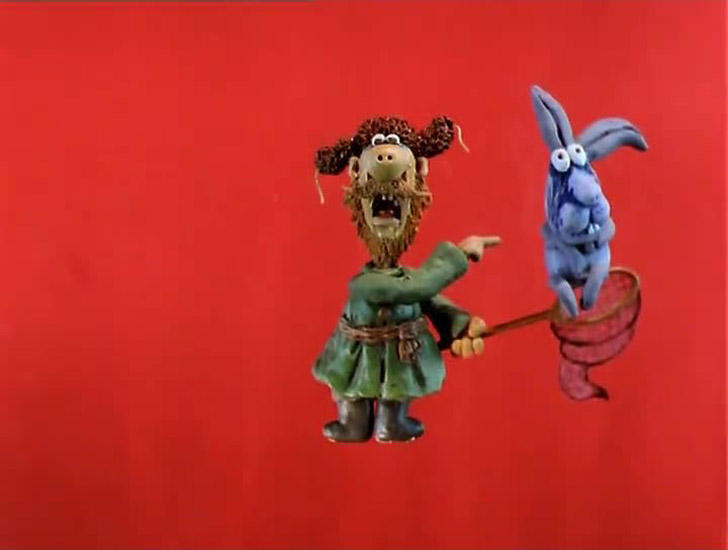
The role of the narrator in the cartoon "Last year's snow was falling" was originally planned to be given to Lie Akhedzhakova. She even voiced the cartoon, but the director Alexander Tatarsky did not like it. As a result, both roles - both the peasant and the storyteller - were given to Stanislav Sadalsky.
Sadalsky, who voiced the roles of a man and a narrator in the cartoon "Last Year's Snow Was Falling," was not listed in the credits. Shortly before the delivery of the cartoon, the actor was detained in the restaurant of the Cosmos hotel with a foreign citizen, after which a denunciation to the chairman of the State Television and Radio Broadcasting Committee, S. Lapin. As a punishment for communicating with foreigners, it was decided to remove the actor's surname from the credits.
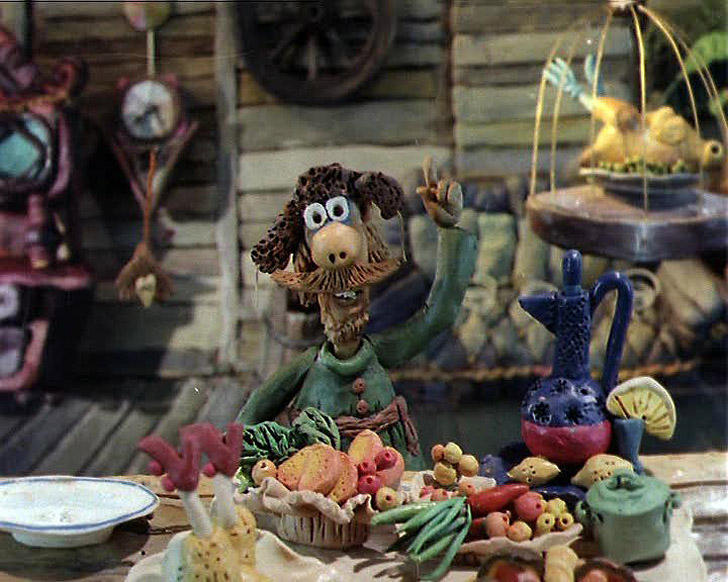
The cartoon "Last year's snow was falling" could not escape the close attention of the censorship. “At the delivery of“ Snow ”I had a pre-infarction state, - recalled the director of the cartoon Alexander Tatarsky. - I was told that I am disrespectful to a Russian person: you have only one hero - a Russian peasant, and that idiot! .. "